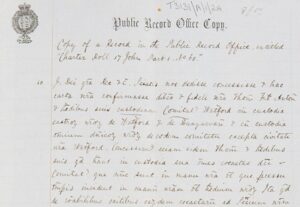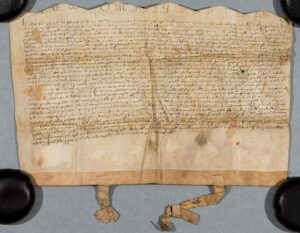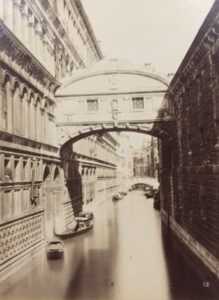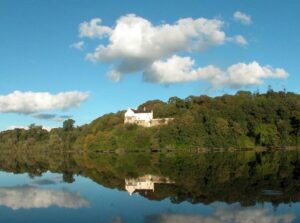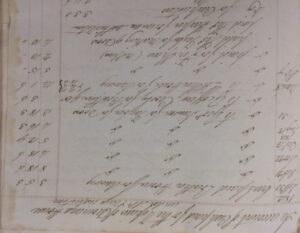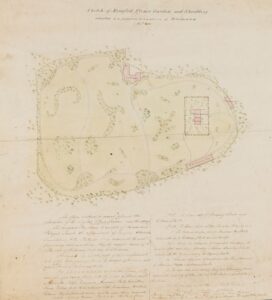Dromana 800: a celebration of the FitzGerald/Villiers-Stuart family in Waterford
- Emer Twomey
- June 29, 2015
Not many of us can say we can trace our family back to the same home for the last 800 years but 2015 marks this very special anniversary for the Villiers-Stuart family living in Dromana, Villierstown, Co. Waterford. The family are celebrating their 800th anniversary with special events over the 2-5 July.
The Villiers-Stuart family, which descends directly from the FitzGeralds of the Decies and of Dromana, has been in unbroken, though not undisturbed, possession of the Dromana estate, near Cappoquin, in West Waterford, since Medieval times.
They descend from the Norman knight Thomas FitzAnthony, Seneschal of Leinster, who on 3 July 1215 obtained from King John a grant of the custody of the territories of Decies and Desmond – the present-day counties of Waterford and Cork.
Through the marriage of Thomas’s daughter Margery to John FitzThomas, ancestor of the Earls of Desmond, the estates came into the possession of the FitzGerarld family. Their descendant, James, 6th Earl of Desmond, who died in 1462, granted the land of Decies (the county of Waterford west of the River Mahon) to his younger son Gerald Mór FitzGerald.
The claim of the FitzGeralds of Decies to be independent of the Earls of Desmond led to strife between the two branches of the family. In a effort to achieve peace, both sides signed an agreement in Cork on 20 October 1529.
Mediators were chosen and all swore “upon the Holy Gospels of God and the health-bringing white wood of the Holy Cross” to uphold the terms of the traty, by which the Earl guaranteed the rights of John FitzGerald to the Decies.
Down to the late 17th century it was the seat of the FitzGerald Lords of the Decies, a junior branch of the Earls of Desmond. Their number included a lady known to history as the Old Countess of Desmond, who dies in 1604 at the alleged age of 140.
In the 18th and 19th centuries Dromana descended several times in the female line, the name changing from FitzGerald, Villiers, Mason, Aland and Villiers-Stuart families, Viscounts and Earls Grandison and Barons Stuart de Decies.
Notable family members include Henry Villiers-Stuart, who stood in the Waterford by-election of 1826 as Daniel O’Connell’s candidate on behalf of Catholic Emancipation, and was elected; his success encouraged O’Connell to stand as candidate in County Clare, and his victory there resulted in the eventual granting of Catholic Emancipation.
Henry’s son, also named Henry, had a colourful life even by Victorian standards, being successively an officer in the British and Austrian armies, an Anglican clergyman, a politician, a traveller, and an antiquarian.
He sponsored a bill on labourers’ cottages and allotments, wrote a report on the condition of Egypt, and published books on his travels in exotic parts and on Egyptian archaeology, illustrated by him.
In the mid-20th century Dromana fell on hard times, but in recent years the family has taken great pains to restore the house and historic gardens, which are open to the public and receive many visitors.
Dromana is positioned in a magnificent setting high up on a cliff overlooking the River Blackwater, an ideal defensive position for a castle. It is believed that a castle was constructed here in the 13th century. The base of a tower house with a two-light ogee-headed window still survives incorporated into the 17th century house.
The castle was besieged in the 1640s on a number of occasions, leaving it in a ruinous state. It was rebuilt in the late 17th and early 18th centuries. In the 1730s Earl Grandison decided to settle at Dromana and the house and garden were embellished.
The second Earl Grandison, George Mason-Villiers, added a new two-storey house across the front of the old one and four bay bow section facing the river. There is a spacious entrance hall with an imperial staircase, but the most impressive feature of the interior was the circular ballroom with faced the river.
In 1803 Lord Henry Stuart contemplated demolishing the late 18th century house and repairing the old block. Architect Martin Day completed the interiors c.1822. Lord Henry’s son, Henry Villiers-Stuart added parapets, pediments and mouldings to the windows and an elaborate surround to the entrance doorway incorporating the family arms.
The 18th century house was demolished by Fitzgerald Villiers-Stuart in 1966. In 1995 James and Emily Villiers-Stuart moved back to Dromana and began work on restoring the house and garden.
The gardens at Dromana have changed dramatically over the course of their 800 years of history. As in all other ‘big houses’ Irish gardens that have been in the ownership of the same family for several hundred years, every succeeding generation left its mark, with the ebb and flow of gardening fashions and new plant introductions.
A rare sketch of a garden (November 1833) survives from the era of Lord Stuart’s tenure. The ‘mingled flower garden’ is more or less what garden enthusiasts of today would describe as a mixed border, consisting of smaller ornamental trees, shrubs, herbaceous perennials, bulbs and annuals, all planted in such a way as to provide interest for twelve months of the year.
This garden area was situated 250 metres south-east of the house, on a patch of high ground above the avenue. At its centre was a pretty cottage orné, lived in by one of the estate’s gardeners. Three pheasantries supplied fowl for shooting parties, but also acted as an ornamental feature in their own right.
The garden is cleverly designed with strategically placed starfish-shaped island beds and long, curving mixed borders, so visitors could not see the full sweep of garden at once, thus adding to the sense of anticipation of what must have been a supremely romantic, flower-filled enclosure.
In 2003, UCC Library acquired the extensive archives of the FitzGeralds and Villiers-Stuarts of Dromana. The collection is open to the public and may be consulted by appointment via email at specialcollectionsarchives@ucc.ie
Acknowledgements:
Text provided by Julian Walton, edited by Crónán Ó Doibhlin and Emer Twomey.
Image of Dromana provided for Dromana 800 celebrations. All other images are from the Villiers-Stuart Estate Collection, UCC Library.
